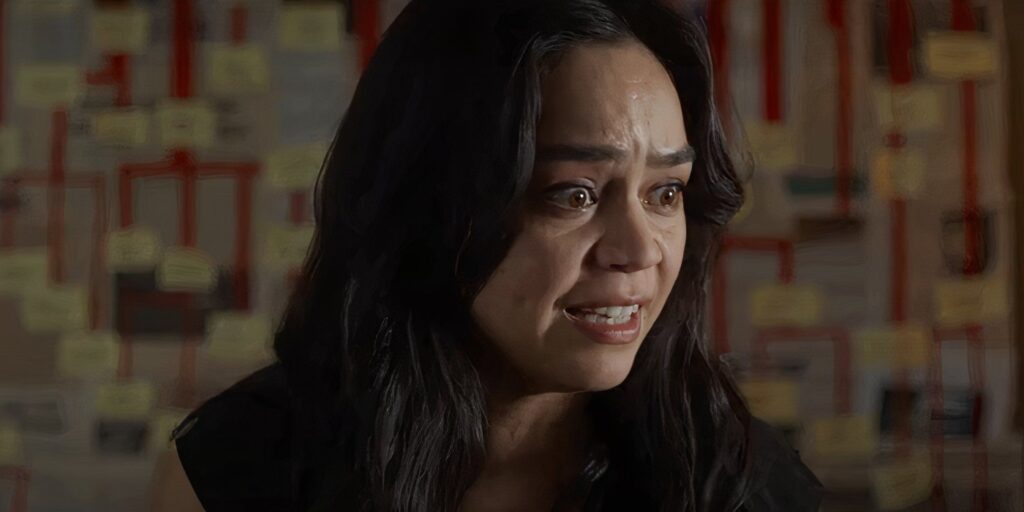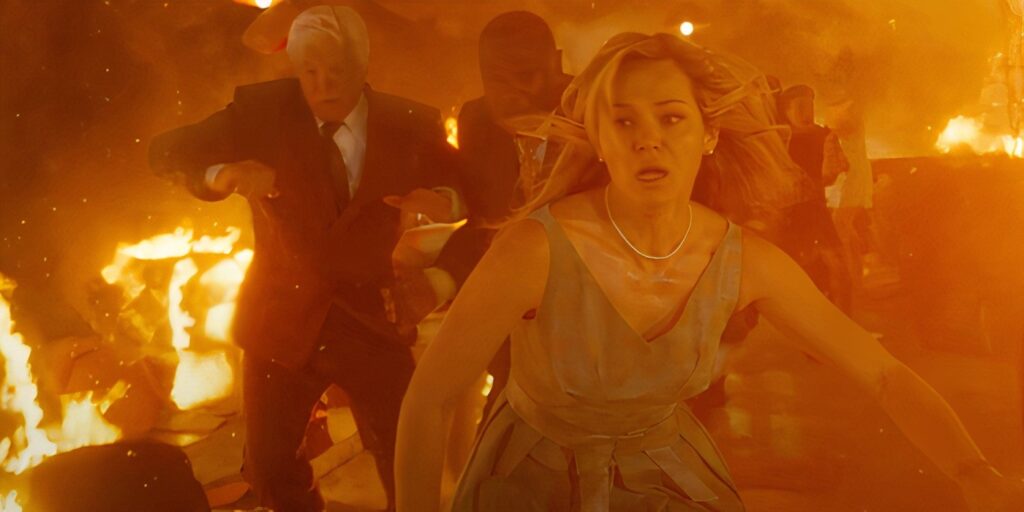The Final Destination franchise has always thrived on unpredictability. From brutal chain-reaction deaths to twisty final scenes, the films pride themselves on making audiences squirm. However, with ‘Final Destination: Bloodlines’, the sixth installment in the long-running horror series, things took a slightly more emotional turn.
Centered around Stefani and her younger brother Charlie, ‘Bloodlines’ explores generational trauma and legacy. It does this while delivering the bone-crunching death sequences fans have come to expect. Now, in the wake of the film’s success, co-directors Adam Stein and Zach Lipovsky have pulled back the curtain on the ending that almost was and why it was ultimately changed.
Stefani’s Alternate Ending In ‘Final Destination: Bloodlines’ Was Heartbreaking

In a recent interview, director Adam Stein confirmed that an earlier version of the script ended on a much more solemn, emotional note. In that version, Stefani survives and chooses to isolate herself in her grandmother Iris’ old cabin. She sacrifices her freedom, her future, and her happiness to ensure her brother Charlie survives. It would’ve been a cyclical ending: just as Iris once sealed herself away to protect her family, Stefani would now inherit that lonely responsibility.
Narratively, it made sense. It was a powerful parallel. In many ways, it honored Stefani’s fierce protectiveness over Charlie throughout the film. However, as Stein explained, it also left the audience with a heavy heart and that’s not what Final Destination films are known for. “It sort of had this depressing feeling in the end,” Stein explained. “She’s the new Iris. She’s going to live her whole life in the cabin to protect her little brother… and it kind of emotionally made sense, but not in terms of the movie-going experience.”
And he’s right. As much as fans enjoy rich storytelling, the Final Destination franchise is fundamentally a thrill ride. It’s gory, fast-paced, and built on the adrenaline rush of near-misses and shocking deaths. Ending the film with a slow, sad, meditative scene would have felt like slamming the brakes after a high-speed rollercoaster. So, the directors opted for a different kind of twist that fits better with the franchise’s DNA.
Instead of becoming a martyr, Stefani lets her guard down, just for a moment and pays the ultimate price. Her death by log truck (a chilling callback to ‘Final Destination 2’) shocked viewers. Some fans felt the final twist came too quickly, while others appreciated the brutal reminder that no one is safe. “You kind of want people to leave with a spring in their step and a smile on their face,” Stein added.
The Mystery Behind Stefani’s Premonition And Why It Never Truly Explained

While the ending may have changed, one element the filmmakers were committed to keeping ambiguous was the origin of Stefani’s premonition. It was arguably the most unique in the entire Final Destination saga. Unlike previous films, where the protagonist has a direct and personal vision of death, Stefani experiences a dream about a premonition her grandmother had decades earlier.
In case you missed it: ‘Final Destination: Bloodlines’ Perfectly Sets Up ‘Final Destination 7’
However, the directors chose not to explain it on purpose. “None of the movies ever really explain why people have premonitions or who’s creating the premonitions,” said co-director Zach Lipovsky to ScreenRant. “There’s a lot of debate about that. Is there some other force other than Death… or is Death giving them the premonition so that he can have some fun?”
Rather than provide a concrete answer, Lipovsky compared the mystery to the famous glowing briefcase in ‘Pulp Fiction.’ It’s the kind of ambiguity that keeps the conversation going long after the film ends. It’s also in keeping with the franchise’s long-standing tradition of keeping “Death” itself as an unseen, unknowable force. The rules may be hinted at, but they’re never fully revealed.
And that’s the point. “I think we love that the audience can come to their own conclusions on that,” Lipovsky continued. “We have some theories of our own, but we like that people can fill in the gaps.” Additionally, that creative choice pays off in ‘Bloodlines’, where Stefani’s connection to her grandmother adds a lot.





